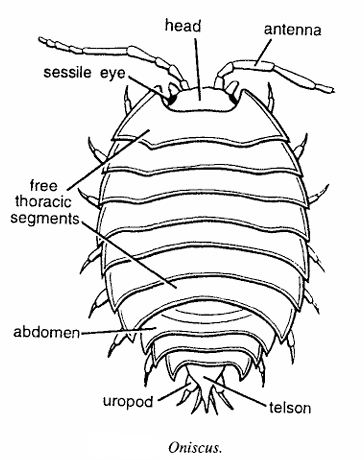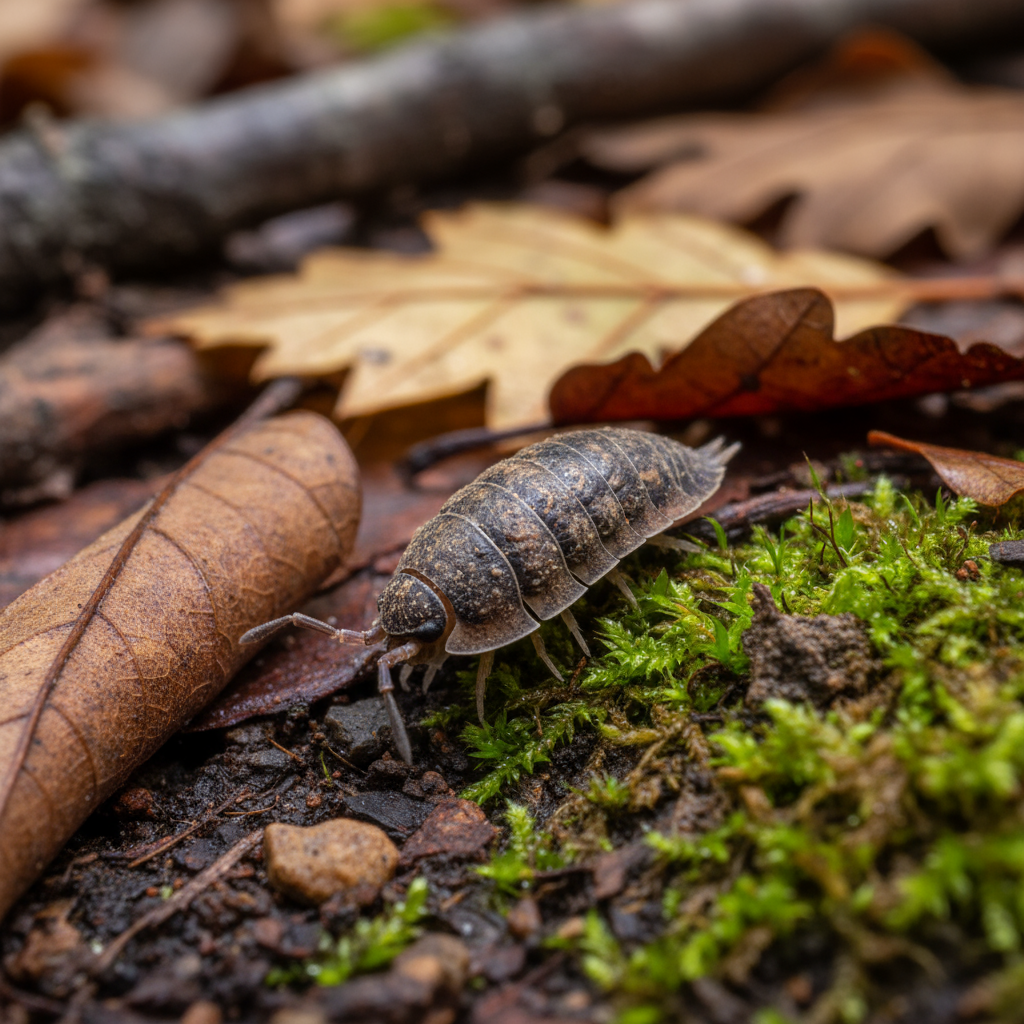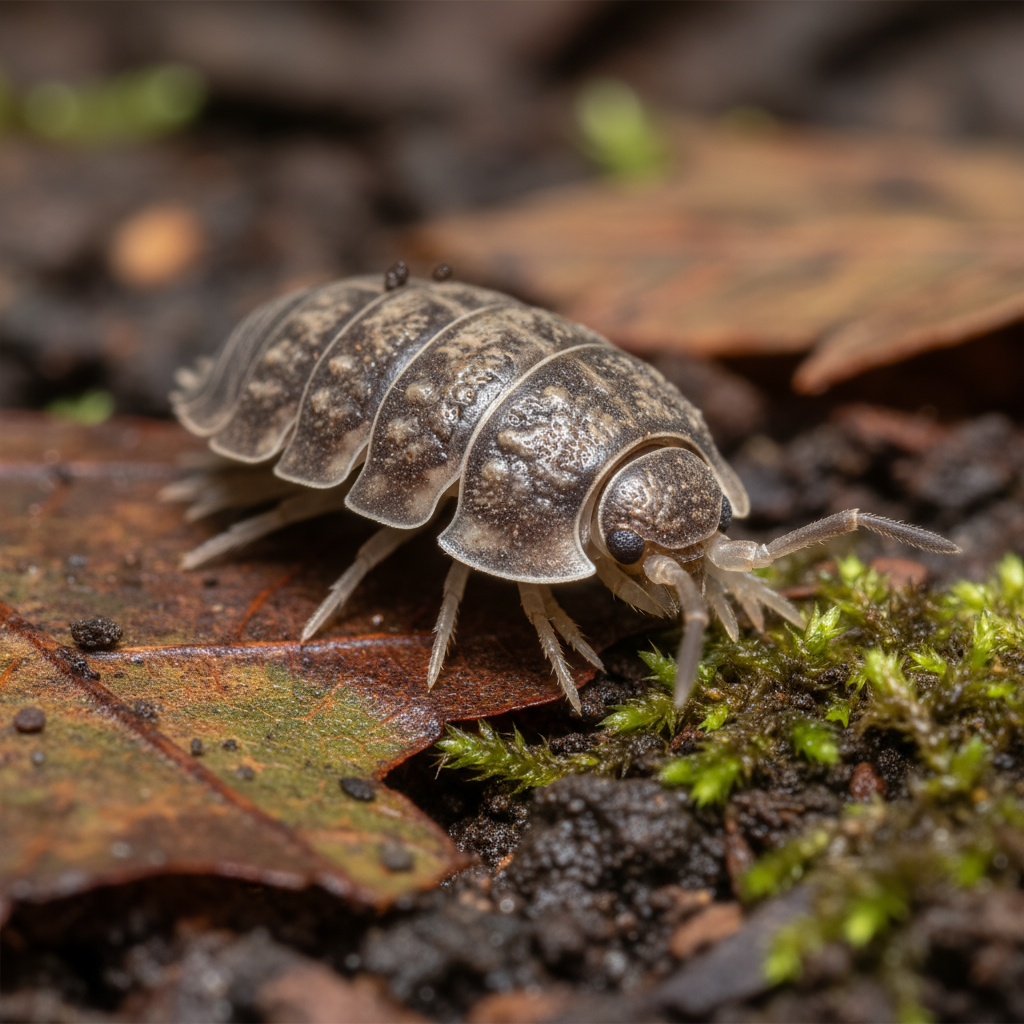Oniscus: Morphology, Classification, Habitat, and Ecology of the Woodlouse Genus
Oniscus is a genus of terrestrial isopods commonly known as woodlice, belonging to the family Oniscidae within the order Isopoda. These small, segmented crustaceans are adapted to life on land, typically found in moist environments under logs, stones, leaf litter, and other damp places. Unlike pill bugs (family Armadillidiidae), which can roll into a tight ball for defense, Oniscus species cannot complete this full conglobation. Oniscus plays a vital role in soil ecosystems by aiding the decomposition of organic matter and nutrient cycling, contributing to soil health.
Classification of Oniscus
| Taxonomic Rank | Name | Characteristics |
|---|---|---|
| Kingdom | Animalia | Multicellular eukaryotic organisms |
| Phylum | Arthropoda | Segmented invertebrates with jointed appendages |
| Subphylum | Crustacea | Mostly aquatic or terrestrial arthropods with exoskeleton |
| Class | Malacostraca | Largest class of crustaceans with diverse body forms |
| Order | Isopoda | Dorsoventrally flattened crustaceans, including woodlice |
| Family | Oniscidae | Terrestrial isopods adapted to land living |
| Genus | Oniscus | Woodlice with segmented bodies, lacking full ball-rolling ability |

Habit and Habitat
Oniscus species prefer moist terrestrial habitats such as forests, gardens, grasslands, and areas with abundant decaying plant material. They seek shelter in dark and damp microhabitats to maintain hydration, owing to their gill-like respiratory structures requiring moisture. Oniscus often shares these niches with other woodlice and soil invertebrates, contributing to decomposition processes by feeding on decaying leaves and organic detritus.
Geographical Distribution
The genus Oniscus is widespread across Europe and parts of North America, with some species introduced beyond their native ranges. Oniscus asellus, a common species, is found extensively across Europe and has been introduced into North America and beyond.

General Characteristics
- Commonly called as wood louse or saw bug.
- Body is broad, oval and dorsoventrally compressed with granulated or tuberculated surface having deep slate colour and white spots.
- Body is divided into head, thorax and abdomen. First thoracic segment is fused with head forming cephalothorax, which is devoid of dorsal carapace.
- Compound eyes are sessile. Appendages are rudimentary antennules, uniramous and prominent antennae, labrum and mandibles.
- Fused thoracic segments contain maxillepedes visible on ventral side.
- Rest of the thoracic segments have walking legs.
- First 5 abdominal segments contain pleopods and the last abdominal segments fused with telson. Thin vascular abdominal pleopods functioning as gills.
- Pleopods have trachea like respiratory tubes. It breeds in warm months.
- The young develop in a brood pouch and emerge in form much like the adults except in size.
- Body Form: Oval, segmented, somewhat flattened dorsoventrally, with overlapping plates called tergites.
- Size: Typically grows to about 15-20 mm in length.
- Coloration: Generally grayish or brownish, sometimes mottled or patterned for camouflage.
- Legs: Seven pairs of similar-sized legs adapted for crawling.
- Antennae: Two pairs, with the first pair short and second pair longer and segmented.
- Eyes: Compound eyes with limited acute vision.
- Defense: Does not roll into a ball, but may seek refuge under debris or use quick retreat movements.
Special Features
- Respiration: Uses gill-like structures on pleopods that require a moist environment.
- Nutrition: Detritivorous, consuming dead plant matter and aiding soil nutrient recycling.
- Reproduction: Females brood eggs in a marsupium (brood pouch) until juveniles hatch.
- Molting: Undergoes periodic molting for growth, shedding exoskeleton in a two-part process.
- Moisture Dependence: Requires humid microhabitats due to cutaneous water loss tendencies.

Identification
Oniscus species are identified by:
- Body size and segmentation.
- Shape and overlap of tergites.
- Antennae length and segmentation.
- Coloration and markings.
- Geographical occurrences and habitat affiliations.
Life Cycle and Reproduction
Oniscus reproduces sexually with internal fertilization. Females carry fertilized eggs in a brood pouch, nurturing young until they are capable of independent life. Juveniles resemble adults but are smaller and lighter in color. Growth is through successive molts, reaching maturity within several months to a year depending on environmental conditions.
Ecological Role and Importance
- Decomposition: Essential decomposers breaking down leaf litter and organic debris.
- Soil Formation: Their activity aerates soil and promotes nutrient cycling.
- Prey: Food for amphibians, birds, small mammals, and predatory arthropods.
- Indicator Species: Presence reflects soil moisture status and habitat health.
- Pest Potential: Occasionally found in gardens feeding on seedlings but generally non-destructive.
References
- https://en.wikipedia.org/wiki/Woodlouse
- https://www.sciencedirect.com/topics/agricultural-and-biological-sciences/oniscus-asellus
- https://en.wikipedia.org/wiki/Armadillidiidae
- https://mdc.mo.gov/discover-nature/field-guide/pillbugs-sowbugs-land-isopods
- https://webdoc.agsci.colostate.edu/bspm/Crustacea%20(Crustaceans)/Pillbug.pdf
- https://entomology.ca.uky.edu/ef439
- https://www.aquarimax.com/isopod-species/
- https://salishmagazine.org/pillbugs-sowbugs/
- https://lanwebs.lander.edu/faculty/rsfox/invertebrates/armadillidium.html
- https://www.britannica.com/animal/Oniscus-asellus
